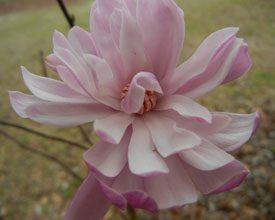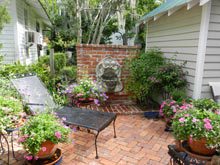 Narcissi erupting everywhere. Dogwoods and azaleas starting their eye-popping show. The first iris appearing, roses glowing already, every single tree now bursting with new leaves in a thousand shades of green – if these didn’t tell you it’s spring, then surely a quick glance at any magazine will toot the vernal horn for you. Yep, it’s spring, all right, and a season more loaded with clichés is hard to imagine.
Narcissi erupting everywhere. Dogwoods and azaleas starting their eye-popping show. The first iris appearing, roses glowing already, every single tree now bursting with new leaves in a thousand shades of green – if these didn’t tell you it’s spring, then surely a quick glance at any magazine will toot the vernal horn for you. Yep, it’s spring, all right, and a season more loaded with clichés is hard to imagine.
Spring presents us with renewal, with new birth or new growth. It marks a time for starting, a time for planting, the time a young man’s fancy turns to love. (I was a young man once, and every spring my fancy would indeed turn to lust, at least, if not love. But, being a young man, that was also true for the other seasons.)
Does it occur to anyone that, surely, spring’s celebrated character is largely an accident of geography? That only temperate and arctic zones experience spring at all; that the tropics lack any such sense of seasonal renewal or the other trappings we assume are inseparable from our welcoming of the spring equinox. Those bright flowers and emerging leaves we so look forward to in our part of the world appear on their own schedule in the tropics, triggered by their own set of requirements – the rains’ arrival or cessation; a predator’s migration – rather than the course of the sun’s movement overhead.
Even in our temperate zone, spring is not truly the time of growth after static dormancy. In our climate, our winters allow many plants – especially shrubs and trees – to produce essential and substantial growth below ground. They are not dormant at all. This rootzone activity during the cold months provides the base for the more visible and celebrated spring show aboveground; it is just as vital and just as impressive in a survival sense as the showy leaves and flowers later on.
Since we tend to get a good bit of rain during the winter, recognizing this root growth is going on should remind us to prepare the soils to discourage drowning the roots and provide the kind of drainage the particular tree or shrub requires. For perennials, good winter drainage is even more important.
Our temperate zone springtime, after the bloom has finished on such garden treasures as camellias and azaleas, pearlbush, forsythias, and many others, springtime after the bloom is an excellent time to propagate these shrubs by air-layering. This is a technique that produces a new plant on a living branch of the shrub; once established, the new and already growing plant is removed and planted to continue growing. Cuttings to be rooted can be taken now from many plants as well, although many would root more successfully later in the season.
The skills and techniques of propagation will be the subject of a day-long series of classes in early summer to be offered to Master Gardeners who want to expand their knowledge and develop their skills. The classes will be available for advanced training to certified Master Gardeners statewide, and the Beaufort area has been selected to host the seminars. Arrangements are still being formulated, but if this is something which appeals to you, try contacting the incomparable Laura Lee Rose, Clemson Extension Agent, lrose@clemson.edu, phone 843-255-6060 ext 117.








